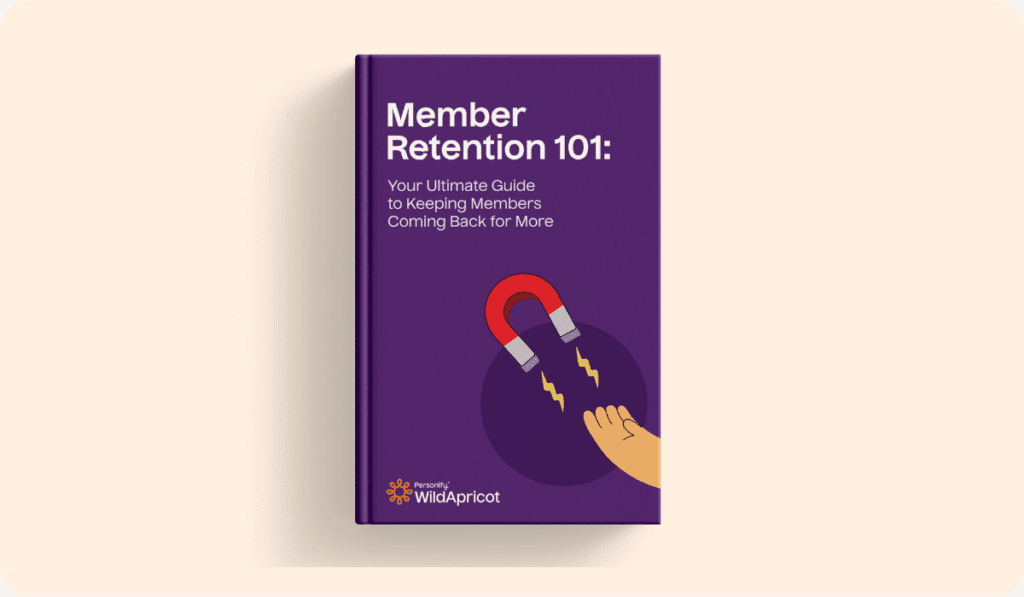Getting excited for your next big fundraising event? Before you go any further, it’s time to set up your fundraising calendar!
When you’ve got an exciting campaign idea (or the coffers are looking low), it can be tempting to dive right into fundraising. But trust us when we say that using a fundraising calendar won’t just make your campaigns smoother—it’ll also bring in more donations in the long run.
Here’s everything you need to know about creating your own fundraiser calendar—plus a free fundraising calendar template!
Why do you need a fundraising calendar?
A fundraising calendar is the first step in making all of your big campaign ideas a reality!
Plan in advance, rather than reacting in the moment
One of the most important parts of starting a fundraiser is having a plan. By the time your fundraiser comes around, you want to be focused on running it instead of planning it.
If any changes need to happen (and they often do!), you’ll be able to modify the plan that’s already in place instead of scrambling. Give yourself a stable foundation!
Avoid gaps in your donor communications
A huge part of asking for donations is about having a dedicated communications plan. Think curated socials, consistent emails, letters or even phone calls. Together, all of these strategies are what bring in the donations that make a campaign successful!
A fundraiser calendar takes the pressure off your marketing team to think on the fly.
Set your fundraisers up for success
Every fundraising campaign has a purpose. The donations you receive support things like essential operations costs and specific causes related to your mission. By the time your campaigns launch, you want to already be confident that you’ll reach your goal!
Your calendar will show you the path to success—all you have to do is follow it.
Fundraising calendar template
Get started planning for a phenomenal year of fundraising. Download your fundraising calendar template below.
When should you start planning your fundraising calendar?
You should start getting your fundraising calendar set up either near year-end or early into the new year! This will let you work within the full picture of your year’s goals and budget.
Our advice is going with the timelines that most of your other reporting is set up around. Come time for your annual report, you’ll be able to measure your success in full.
If you’re looking for the best times to run your fundraising campaigns, don’t forget the power of year-end giving. Between the holidays and events like Giving Tuesday, most donations happen between November and January. In fact, according to Nonprofits Source: “30% of all annual giving occurs in December, and 10% of that happens within the last three days of the year.”
Remember that your summer months are typically lean for fundraising. Use them as an opportunity to fully flesh out the fall and winter fundraising ideas you have scheduled in your calendar.
These months are going to be busy, busy, busy! If you have your fundraiser calendar set up in advance, the burden of planning in the moment disappears.
Keeping your fundraising calendar fresh with regular updates
The best plans are flexible plans. It’s important to have goals and milestones set, but life doesn’t always go the way you expect! Whether there’s a disruption in your industry, an unexpected setback or the campaign simply isn’t taking off like you hoped, don’t be afraid to pivot.
Set up your fundraising calendar with the knowledge that it’ll probably change throughout the year. Your fundraiser calendar template should always be an editable document!
In order to stay on track, set up planning sessions:
- Yearly to set down your big goals and approve the fundraiser calendar.
- Quarterly to check in on your success, especially in relation to your budget.
- Monthly to address any pain points and brainstorm new avenues.
These meetings give you a great chance to review your successes, roadblocks, missed opportunities and lessons learned.
Aligning your calendar to your fundraising strategies
Dates shouldn’t be arbitrary—your calendar should reflect your goals and strategies for fundraising in the coming year.
Ask yourself:
What campaigns are you planning?
Looking to hold a membership drive? A Giving Tuesday campaign? A fundraising event for a specific cause?
Review each of the campaigns you’re hoping to run and identify where you want to place them throughout the year. Keep in mind budget and staff capacity—if you’re holding three separate campaigns between September and December, you might end up knocking people out.
Use your calendar to discover how you can spread out the work and keep your organization in the public eye all throughout the year!
What channels are you using?
Part of your nonprofit marketing plan should be identifying which channels you’re using for fundraising.
Are you investing in paid advertisements? Launching dedicated social media and email campaigns? Pairing with influencers?
Whether you’re focusing primarily on online fundraising or looking to build up hype for a specific event, your fundraising calendar is an essential asset.
Based on what you put in your fundraising calendar template, you can identify:
- Key dates for your social media calendar
- When to start reaching out to your contacts
- How far in advance to book paid advertising
Every channel needs something a little different—let your calendar keep it organized in one place!
What’s your organization’s budget for various fundraising efforts?
The money your organization has on hand will ebb and flow throughout the year. Don’t think of your budget as a constraint—it’s actually a fantastic set of guidelines.
Work with your board’s financial officer to check your fundraiser calendar template against your nonprofit’s expected income and expenses.
This will reveal when:
- You can afford to invest money into things like your event publicity budget
- Your organization most needs the extra financial boost
- It’s safe to take some creative risks versus work with what you know
The money you fundraise will impact next year’s budget, so treat it like a friend!
Setting goals for your fundraising calendar
Every campaign comes with specific goals. Here are 3 key tips for structuring them in your fundraising calendar.
Map your strategies to your calendar
Give your strategies a specific timeline. Once you have milestones in mind, set down tangible dates where they should be reached! This will show you if you’re on track for your goals.
Set SMART goals
We can’t overstate the power of SMART goals! When you move away from vague hopes and into a solid plan, you start turning your dreams into goals.
Keep those goals SMART (Specific, Measurable, Attainable, Reasonable and Time-Bound) and you’re sure to reach them.
Decide how you’ll measure success
Success will likely look different for every campaign. Sure, your dream campaign will raise tons of money, have higher average donations, bring in new donors, get you great publicity and also bring about world peace—but in the long run, it’ll serve you to focus.
Determining your KPIs (key performance indicators) early on helps you settle on a goal. Plus, it gives you numbers to measure your success against in your reports!
Planning key fundraising dates
A fundraiser calendar is meant to map out your fundraising plans for the whole year. When you’re setting down your timelines, keep these key fundraising dates in mind.
The Holiday Giving Season
We already mentioned that the winter holidays are the most charitable time of the year! You don’t want to miss out on running Thanksgiving, Giving Tuesday and December campaigns. This period gives you the perfect time to create your workback schedule from.
Psst! Check out these Giving Tuesday ideas to get the gears turning.
Start/end dates for fundraising campaigns
Don’t just apply workback logic to end-of-year giving—figure out when you want your fundraising campaigns to start and end. This will show you your busiest times and ensure you have time to prepare things like marketing materials, fundraising videos, in-person events and more.
Annual events
Make note of the reliable events that come up every year. If you’ve organized a fundraising marathon for the past eight years, there’s no reason to leave it out in year nine! Ground yourself in those reliable milestones.
Special events
Do you have any unique events planned for the year? Put them in your fundraiser calendar so they don’t get swept under the rug by your more typical events.
Board meetings
This is a little bit different from our other suggestions, but it really does pay to plan around your board meetings! Think of these meetings as your check-in points. When your fundraising events are running, it pays to know when you’ll be able to discuss how things are going with your board—especially if you need to pivot.
Community events & partnerships
Don’t just put down your organization’s events! Make note of what external events you’ll be participating in with your partners.
While you won’t be organizing these events, they’ll be great publicity moments. Plus, you’ll want to know if there are specific times where you should expect staff members to be out of office for community support.
What else to include in your calendar
A fundraising calendar isn’t just a matter of putting down dates and times! It’s meant to be a tool to help you organize from the back-end.
Be sure to include:
Team member roles and responsibilities
Every fundraiser is a team effort! A key part of running a successful fundraiser is having everyone’s roles and responsibilities clearly laid out.
When you are filling out your fundraiser calendar template, be sure to include:
- Who is leading each campaign
- The team members or department who are heading it
- Stakeholders and approvers
This will smooth out back-end communication and keep everyone accountable.
Donor groups
Remember how we mentioned the importance of keeping your goals specific? Organizing your fundraiser calendar by donor groups will help identify who you’re aiming to reach and how!
Segmenting your audiences will help you choose things like preferred communications channels or types of events. Plus, you can specify campaigns for individual groups!
Some groups to include are:
- Major donors
- Corporate donors/prospective sponsors
- New donors
- Long-time donors (think retention & upgrade goals!)
An essential part of donor stewardship is really getting to know your donors wants, needs and values. If you can reach them as unique individuals, it’ll be far easier to fundraise.
Communications breakdown
Fundraising campaigns come with a LOT of communications. After all, you start reaching out to donors before the campaign even kicks off, and reconnect with them after it’s over.
Reaching donors is an art form—you don’t want to miss any of the key steps that help you fundraise.
A fundraising calendar can help you schedule:
- Initial outreach like appeal letters
- A long term email campaign
- Website updates
- Social media strategy
- Phone banking
- Thank you letter for donations
Give your marketing and communications team a chance to prepare in advance by showing them their deadlines in one big calendar!
Expenses & Revenue
If you’re aiming to fundraise, then at least part of your goal is going to be financial. Consult your budget to estimate both expenses and revenue for your fundraising campaigns.
If you end up overspending, your fundraiser calendar will remind you of where you should be. Likewise, if you start smashing through your goals, you can see how hard you should celebrate!
How to make your fundraising calendar
Now that you know why you need a fundraising calendar, you might be wondering how to actually make it. There are plenty of tools at hand—getting creative in Excel is an option, or working with something like Asana.
But if you want to save yourself some time and money, we’d suggest using our free fundraising calendar template! Click below to download so you can get planning.
Use your fundraiser calendar to smash your goals this year!
We hope this fundraising calendar guide has helped you understand the power of planning. Simply by following our fundraiser calendar template, you should be set up nice and fast for a year of awesome campaigns. Dream big, set smart (and SMART!) goals, and there’s nothing you can’t achieve!








